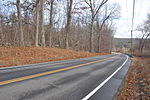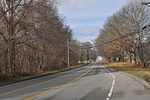Samuel Huntington Birthplace
Birthplaces of individual peopleHistoric house museums in ConnecticutHomes of United States Founding FathersHouses in Windham County, ConnecticutHouses on the National Register of Historic Places in Connecticut ... and 5 more
Museums in Windham County, ConnecticutNational Historic Landmarks in ConnecticutNational Register of Historic Places in Windham County, ConnecticutScotland, ConnecticutUse mdy dates from August 2023

The Huntington Homestead, also known as the Samuel Huntington Birthplace, is a historic house museum and National Historic Landmark at 36 Huntington Road (Connecticut Route 14) in Scotland, Connecticut. Built in the early 18th century, it was the birthplace and boyhood home of Samuel Huntington (1731–1796), an American statesman and Founding Father. He served as a delegate to the Continental Congress, where he signed the Declaration of Independence. He also served as Governor of Connecticut and was the first presiding officer of the Congress of the Confederation, the first central government of the United States of America.
Excerpt from the Wikipedia article Samuel Huntington Birthplace (License: CC BY-SA 3.0, Authors, Images).Samuel Huntington Birthplace
Huntington Road,
Geographical coordinates (GPS) Address External links Nearby Places Show on map
Geographical coordinates (GPS)
| Latitude | Longitude |
|---|---|
| N 41.698611111111 ° | E -72.085555555556 ° |
Address
Samuel Huntington Birthplace
Huntington Road 36
06264
Connecticut, United States
Open on Google Maps










